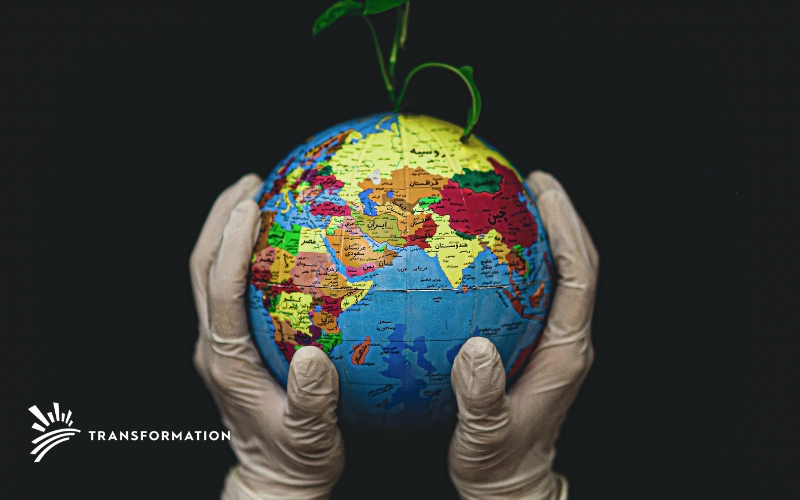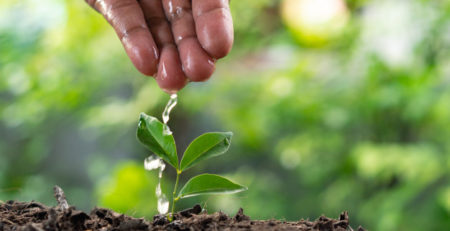How to Save the Planet (without even trying!)
We often think of saving the planet as an abstract idea; something beyond our personal control. But climate change is very real, and we need to start taking decisive steps now if we want to turn it around. Making sustainable choices doesn’t have to be expensive or difficult; what are some simple ways that everyone can make a difference?
Most people in today’s world face an increasing amount of climate anxiety. Fear of what the future holds is on the minds of many, facing the loss of our natural world and seeing the consequences of our dependency on fossil fuels.
Often when we face this seemingly endless wave of bad news, we might begin to feel defeated and wonder what we, as a single individual, could do. The good news is that you can help stop climate change, learn how carbon footprint works, and become a climate superhero without even trying.
Your Carbon Footprint
When you hear carbon footprint, what does that mean? This is a phrase we hear a lot when we are talking about saving the earth and climate change, but often we don’t hear a clear definition of it.
An individual’s carbon footprint refers to the number of greenhouse gasses that person produces through all actions in a year. This includes things we personally do and the number of greenhouse gasses created in the process of making the things we purchase and use.
Another important fact to look at is the average carbon footprint of the average American. The average American has a carbon footprint of 16 tons of CO2 per year. Most of this comes from fossil fuels which we use when powering our cars, heating our homes, and producing plastics.
Live Green
One way that many people can start to make a positive impact on the environment, and start off their climate hero journey, is to start living in an eco-friendly way. A few of the best practices include simple things you can start doing in your own home.
LED light bulbs are somewhat of a buzzword in energy savings, with their longer life spans, but that actually makes a huge difference. By switching out your incandescent light bulbs for LED, you save over 4,000 pounds a year in your personal carbon footprints and carbon emissions.
Another major thing you can do is to ensure you insulate your home. By improving your current insulation or insulating your home, you can reduce your carbon footprint by up to a metric ton (2200 pounds) per year.
This ensures the heat being produced doesn’t escape into the outdoors. As an added incentive, you also will save money on your energy bill.
On the flip side, in the summertime, you can help reduce your carbon footprint by using your air conditioner less. Do this by turning up your temperature when it’s getting hot outside. For each degree above 72 F, you save 120 pounds of carbon dioxide (CO2). By giving your air conditioner a break, you help with environmental impacts while saving the planet little by little.
Responsible Food Choices
The average American eats 57.5 pounds of beef per year, resulting in around 1300 pounds of CO2 produced from this beef production. While this certainly doesn’t sound like an enormous number, it makes up 4% of the average American’s annual carbon footprint.
One thing you can do to decrease your carbon footprint, as well as help protect our natural world, is to start eating less meat. People who eat a plant-based diet produce around half as much CO2 per day when compared to those who eat meat as a regular part of their diet.
One trend that has become more popular in recent years is meatless Monday. This trend simply means on Mondays; you would eat a plant-based diet. While it seems minuscule, you would end up reducing your meat consumption by about 15%, which for the average American ends up being around 400 pounds of CO2 per year.
Another smart choice when it comes to our diets is choosing locally sourced foods. There are multiple benefits to this, of course, one being the support for local businesses and farmers who need your support! Check out your local farmer’s markets or co-ops to find local produce and food.
Food transportation produces around three gigatons of CO2 annually. How much is a gigaton? One gigaton is equivalent to 2.2 trillion pounds. This means that the food transportation industry is responsible for 6.6 trillion pounds of CO2 annually, which is roughly 20% of all food-related greenhouse gas emissions.
Buy local, reduce your carbon footprint, and support local businesses.
Plastic Dependency
A final area that we all can do better with is our dependency on plastic. The average American throws away 110 pounds of single-use plastics each year, which ends up equating to about 350 pounds of CO2 produced.
This also is a contributing factor to health risks and wildlife extinction, especially in our oceans. It is also the area that is easiest to improve upon. You simply need to buy a reusable water bottle, straws, and bags.
This also will help protect you from microplastics. Microplastics refer to plastics that are smaller than five millimeters long but are often smaller than that. Recently there have been studies showing that microplastics are making their way into human blood, which is very concerning.
Microplastics are a contributing factor to wildlife extinction, plastic waste, and harm to the natural world. Simply by switching from single-use plastic, you can help prevent this from continuing to happen.
It takes time to change your habits and time to understand how the amount of carbon can have a huge impact on your ecological footprint. Simple tasks that many would think are small often compound into greater impacts than anyone could imagine.
If you live in a city, consider taking public transport rather than driving to work. Why shouldn’t we consider the beautiful future we could create in the United States and globally if we decided to limit plastic waste?
What if we each committed to reducing our own carbon footprints? Building a better future is possible, but only if we each do our part and continue to work together. Working together is the way forward and the way that we can all save the planet without trying.




Leave a Reply